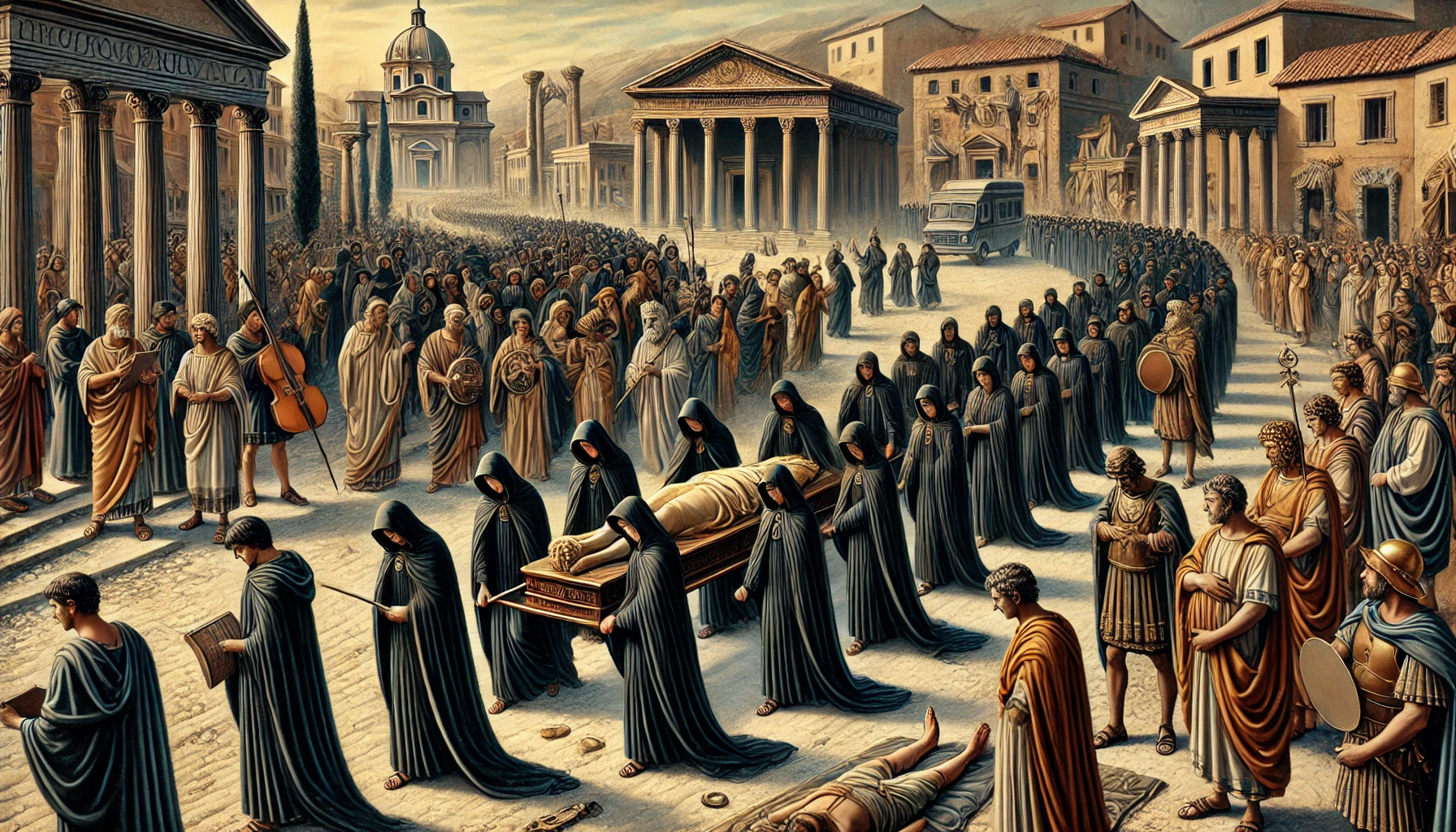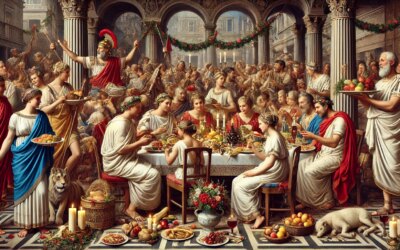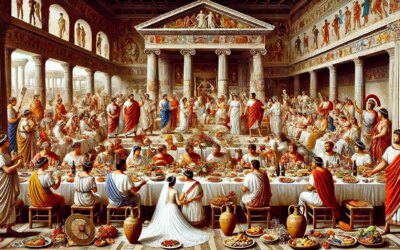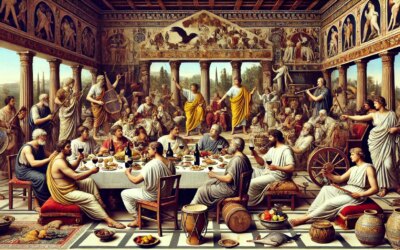The Last Journey Through Rome
At dawn, a solemn silence blankets the street. A group of mourners clad in dark woolen cloaks walks slowly behind a bier, where the shrouded body of a Roman citizen rests. Musicians sound the mournful notes of the tibia, while masked actors representing the deceased’s ancestors lead the way. This is a Roman funeral procession in the 1st century AD—a public ritual as much about civic identity as personal loss.
Death and Commemoration in Roman Culture
Romans approached death not with fear but with ritual precision and deep social symbolism. Funeral rites (funera) were designed to honor the dead, affirm family prestige, and ensure proper transition to the afterlife. Whether for a senator or a freedman, funerals followed structured forms, steeped in tradition and public performance.
Romans believed that improper burial could disturb the peace of the deceased’s spirit (manēs), affecting the living. Funerals were thus both spiritual acts and public affirmations of Roman values.
The Role of the Family
Upon death, the body was washed, anointed, and laid out in the home’s atrium. The family held a vigil, often for up to eight days, with offerings of incense and flowers. A coin (the obolus) was placed in the mouth of the deceased, a token for Charon, the ferryman of the underworld.
The family played a central role in organizing the funeral. Wealthy households hired professional mourners and funeral directors (libitinarii), while the poor relied on neighbors and burial clubs (collegia funeratica).
The Funeral Procession
The procession moved from the house to the burial site outside the city walls. It included:
- Musicians: Playing flutes, horns, and percussion to set a somber tone
- Mourners: Family members and hired women wailing and tearing garments
- Actors: Wearing imagines, wax masks of the family’s deceased ancestors, symbolizing continuity
- Priests: Carrying sacred tools and invoking purification rites
- The bier: A wooden platform or litter holding the body, sometimes carried by slaves
Wealthier funerals might include lictors (bodyguards), torchbearers, and even gladiatorial games held in honor of the dead. The route often passed key civic spaces to publicly reaffirm the family’s status and service to Rome.
The Eulogy and Cremation
At the ustrinum (cremation site) or sepulchrum (tomb), a family member—usually the eldest son—delivered the laudatio funebris, a eulogy celebrating the deceased’s virtues, achievements, and lineage. This oration was often a political act, reinforcing the family’s public image.
The body was then cremated on a pyre. The ashes were collected in an urn and placed in a tomb or columbarium. Tombs varied from humble niches to elaborate mausoleums with inscriptions, busts, and relief carvings.
Post-Funeral Rites and Remembrance
Funeral ceremonies did not end with cremation. The family observed a period of mourning lasting nine days, culminating in a purification ritual (novendialis) and a communal meal (silicernium).
Annual commemorations followed, particularly during the Parentalia in February, a festival honoring ancestors. Offerings of wine, garlands, and food were made at tombs, ensuring ongoing remembrance and spiritual harmony.
Funerary Inscriptions and Tombs
Tombs along the Via Appia and other Roman roads bore Latin epitaphs ranging from poetic tributes to humorous warnings. Many included professions, ages, and even social commentary. These inscriptions give voice to the otherwise forgotten—freed slaves, soldiers, women, and children—offering a rich portrait of Roman diversity in death.
For elites, funerary monuments were political statements. The Tomb of the Scipios and the Mausoleum of Augustus celebrated dynasties as much as individuals, shaping collective memory through architecture and rhetoric.
Philosophy and Death
Roman views on death were shaped by Stoicism, Epicureanism, and native superstition. Stoics like Seneca emphasized acceptance and virtue; Epicureans dismissed fear of death as irrational. Still, most Romans practiced traditional rites, ensuring that ritual complemented belief.
Death was not hidden—it was displayed, discussed, and integrated into public life. In the words of Cicero: “To be ignorant of what occurred before your birth is to remain always a child.” Remembering the dead was part of being truly Roman.
Legacy of Roman Funerary Culture
Roman funeral customs influenced early Christian rites, medieval burial practices, and modern commemorations. The emphasis on processions, eulogies, and public memory endures in today’s funerals and memorials.
To walk a Roman funeral route in the 1st century AD was to see life, death, and legacy converge—a final march affirming the deceased’s place in the eternal fabric of the Republic and the empire.






